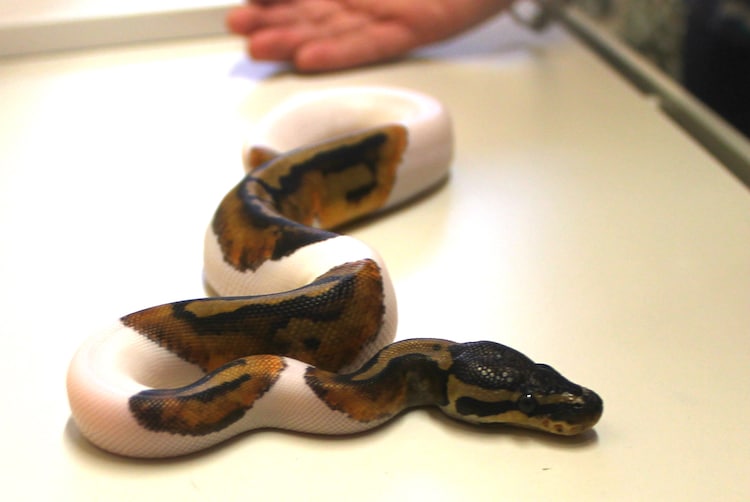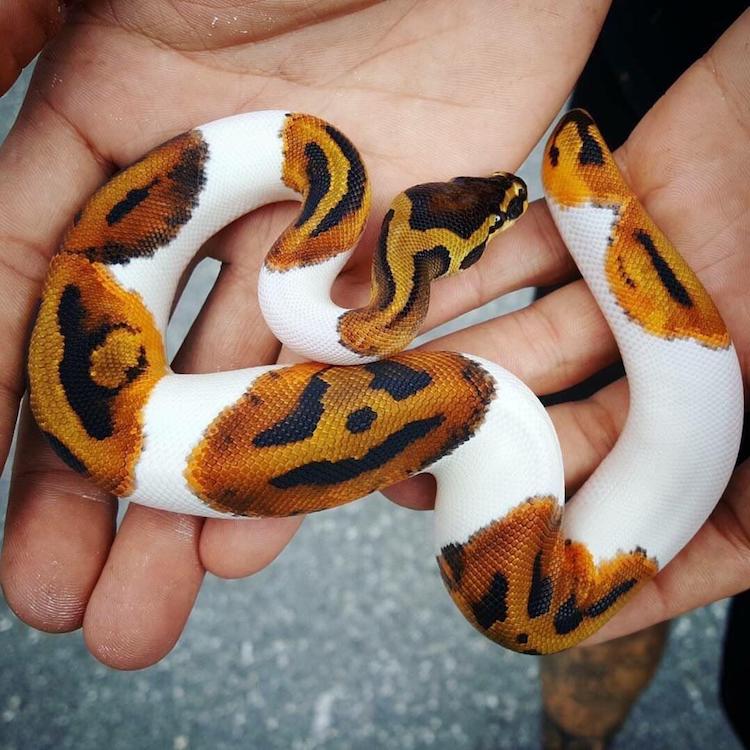
Photo: reddit
As we step into autumn, everyone has pumpkin on the brain—from pumpkin pie to pumpkin spice lattes. But what about a pumpkin skinned snake? These rare piebald ball pythons have unusual markings that appear like jack o’lanterns right on their skin.
It can take years of selective breeding before the serpents come out with the perfect pumpkins, making them highly valued pets for reptile lovers. Piebald animals have a pattern of pigmented spots surrounded by unpigmented—white—areas. And it doesn’t just happen with ball pythons. More commonly, the effect is seen in horses, cattle, dogs, birds, and pigs. The underlying cause is a sort of leucism, which is a lack of pigmentation that also accounts for the pale tigers and white giraffes that have appeared lately.
Breeding piebald snakes is not easy, as the coloration of the parents doesn’t guarantee the coloring of the offspring. For instance, just because a female snake is 90% piebald, it doesn’t mean her children will be—hence the years of trial and error to get the perfect pumpkin patch result.
And while people often consider ball pythons a “beginners” snake, think twice before making your purchase. The non-venomous constrictor can live 25 to 30 years and grow up to 4.5 feet long. They also need to be maintained at the proper temperature and humidity in addition to being fed fresh or frozen mice once a week. And while they can be handled—their docile nature is one of the reasons they’re considered a good pet—doing so excessively can place unnecessary stress on them. Be sure you are prepared to take on the work before letting one into your home.
Piebald ball pythons are selectively bred for years to obtain a pumpkin patch pattern on the skin.
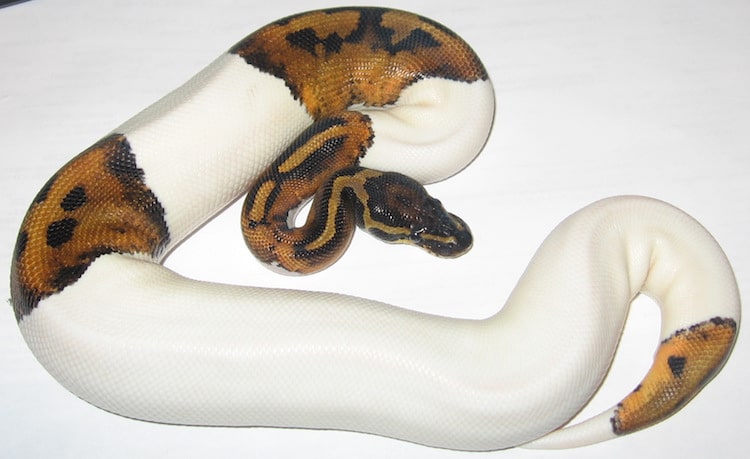
Photo: Eclipse Exotics (Own work) [CC BY-SA 3.0], via Wikimedia Commons
Another breed that gets us in the fall mood is the Red Cornsnake, whose orange and red hues match closely with the season.
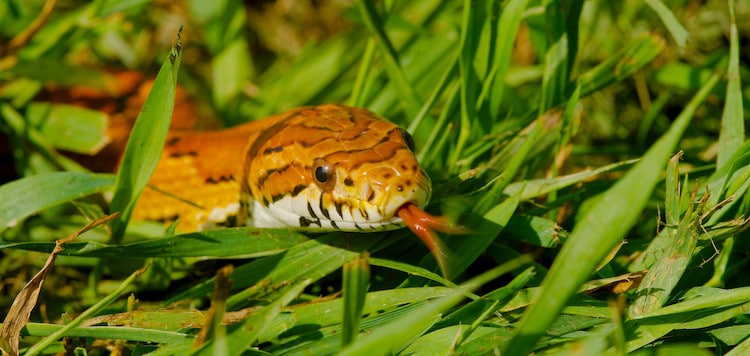
Photo: Josh More

Photo: Josh More
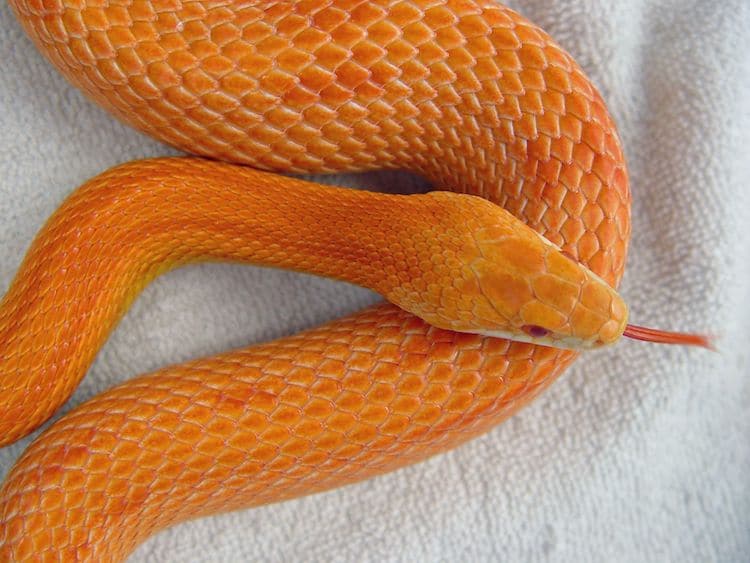
Photo: batwarngler
h/t: [reddit]

